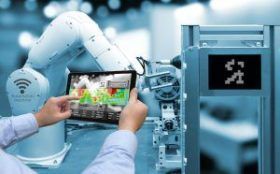
- Cade Wells, Business Development Manager at CENSIS, discusses the advantages of digital twins despite traditional issues with perception. This post originally appeared in Digit on 18 December 2020.
As a concept, ‘digital twins’ has been around for some time in the technology world – but it is still very much at the beginning of its evolution. Perhaps one of the reasons it has been held back is a perceived lack of definition and, in that sense, it has meant all things to all people. As such, it has tended to provoke a mixed reaction and from some has been considered somewhat of a buzzword.
Digital twinning has been the victim of its own potential success, in that respect – the vast opportunities there are for its use has made it difficult for businesses to nail down exactly what it is and what it is for. However, providing some focus could be the key to helping businesses and public services reap the benefits of what a digital twin could provide.
- That process begins with a definition of the term itself.
IBM provides what is perhaps the most succinct and simplest description of a digital twin: a digital representation of a physical asset, process, or system. Definitions from other technology groups are, of course, available.
It is easy to see how this might make digital twins fall into the trap of being all things to all people. But, the next stage of this becomes defining their purpose. General Electric (GE), for instance, adds to its description that digital twins are ‘designed to detect, prevent, predict, and optimise through real-time analytics to deliver business value’.
This provides some important context that helps build an answer to another of the most important questions about digital twins: their purpose. Again, the diversity of potential applications makes it difficult to be too specific – as the GE definition alludes to, they can be used to trial different scenarios, make changes to different versions of a product, or enable prognostics.
Then there is the question of what is required to make them work. This may be a case of using historical data to understand when problems have occurred and combining that with IoT to take real-time data streams to detect an issue before it occurs.
With the vast majority of us still working from home, a digital twin might be used in a variety of ways. Some companies have explored their use in training by sending engineers headsets, which visualise a digital twin of a machine or component, using it to run through different scenarios. They may even be used to present instructional data for training, replacing the need for hours spent running through manuals and making it more digestible for the user.
- However, digital twins need not be the preserve of engineering and tech people alone.
As we look towards a return to the office in 2021, digital twins might be used more commonly to map out offices and look at theoretical layouts that might help accommodate all of a business’s employees while helping them to social distance.
In principle, the only limit is the ability to create sufficiently detailed digital models and the different scenarios and contexts in which to test them. Indeed, this is where digital twins can come into their own.
Self-driving cars, for instance, will require a lot of sensing and decision-making technology and with that comes the need to understand how these perform in very different environments – whether it is on a motorway in California or the streets of Edinburgh. A digital twin can provide some of this data before the need to physically test the vehicle in multiple locations.
It may seem challenging for Scottish companies to develop digital twin technologies against a backdrop of multinationals doing likewise. But, these large companies are addressing fundamental technology challenges that will help realise digital twins on a wider scale, and they are actively looking to collaborate with organisations which have specific end-market knowledge.
- With that comes opportunity.
Significantly more companies will need access to commercial-grade tools that allow them to create twins of their own products, services and processes, without having to employ machine learning, software, IoT, IT and visualisation specialists. This leaves a gap for smaller companies to fill and one company doing just that is Northern Ireland-based 3DEO, which is looking at the visualisation of data in ports and harbours, among a range of possible applications.
So, for any company looking at digital twins, do not be daunted. The concept may at first appear nebulous and the applications potentially endless. But, with the right definition – what do you want it to do and what do you want it to achieve – creating a digital twin could be a significant addition to support your products, services, or processes.